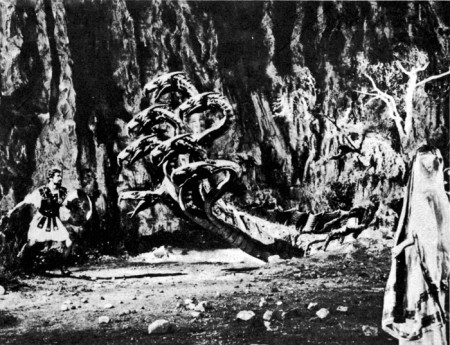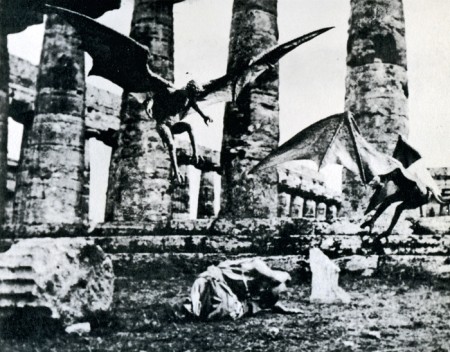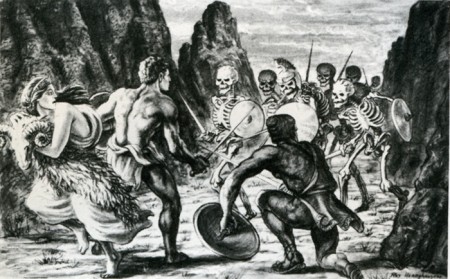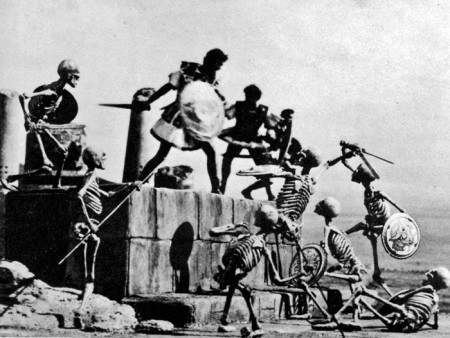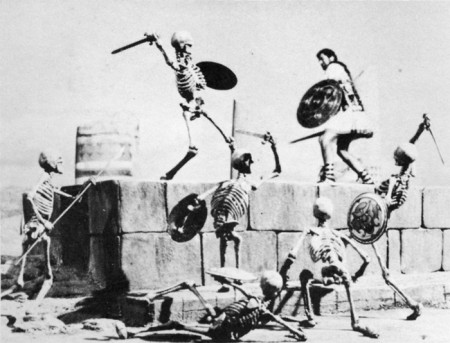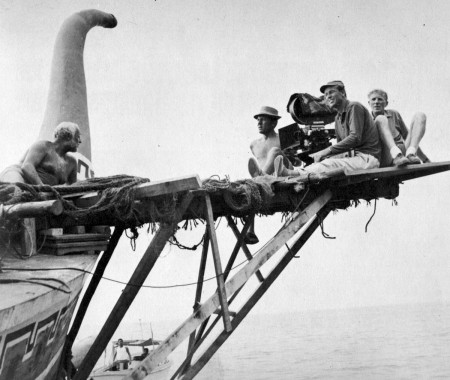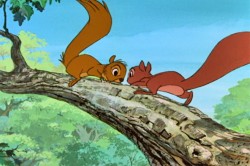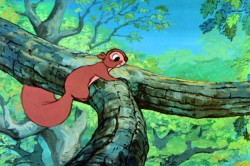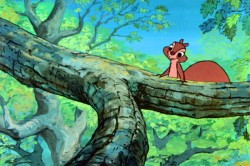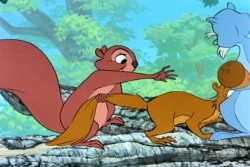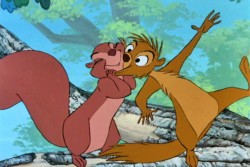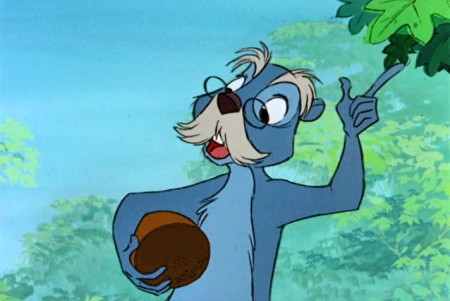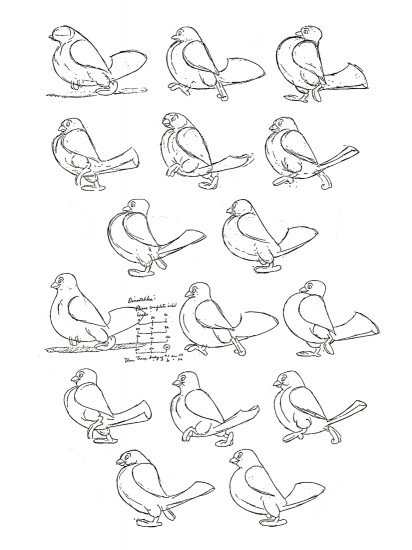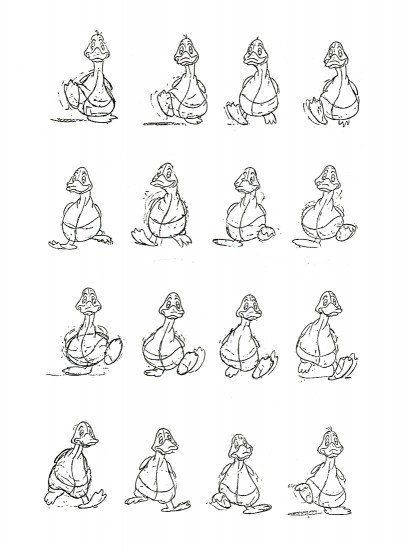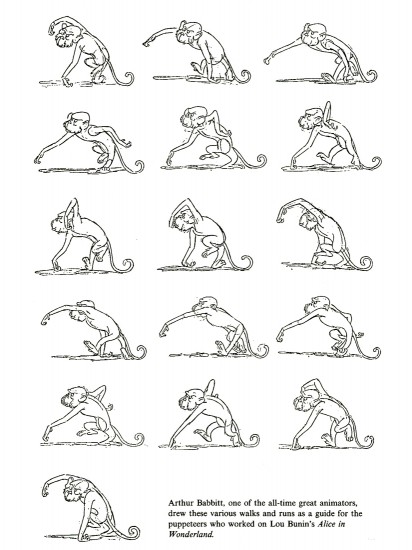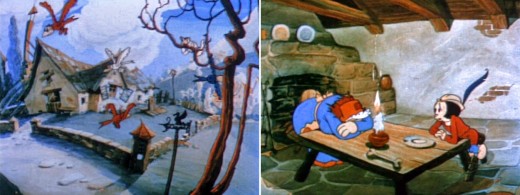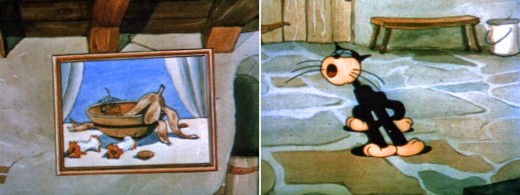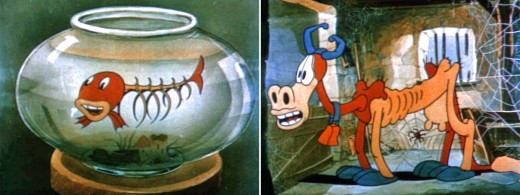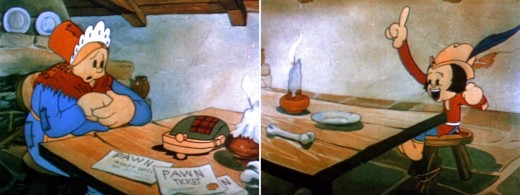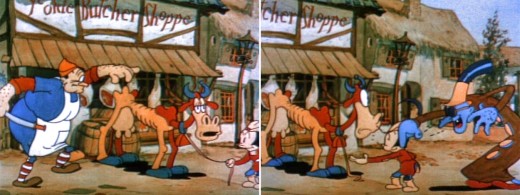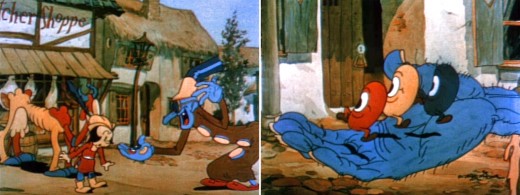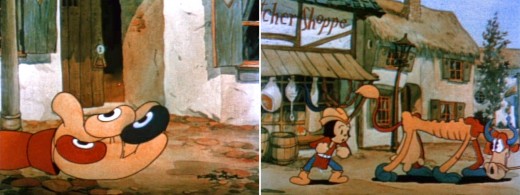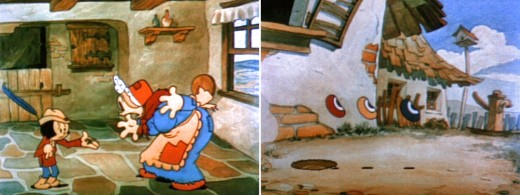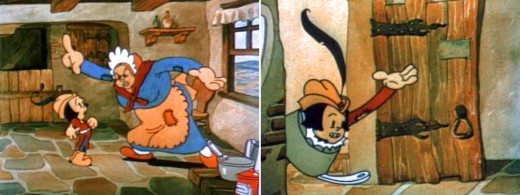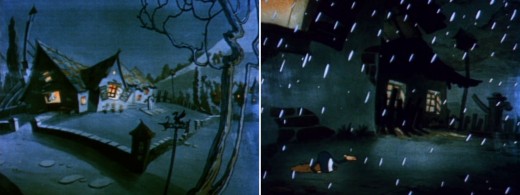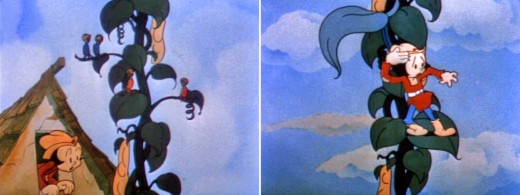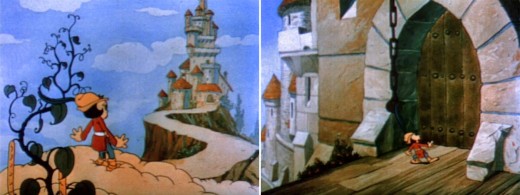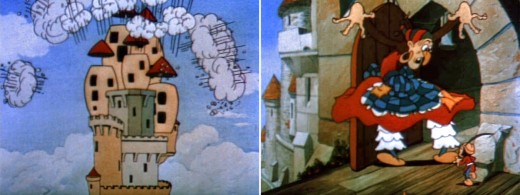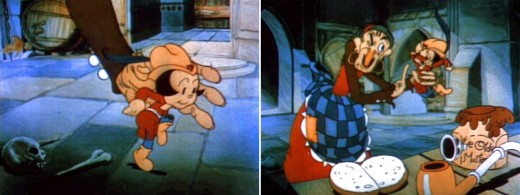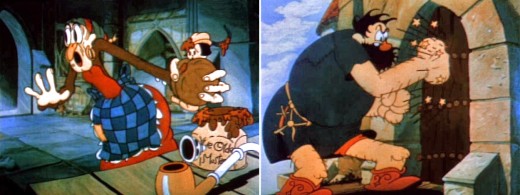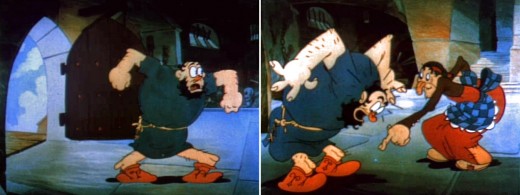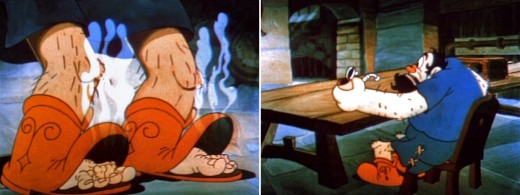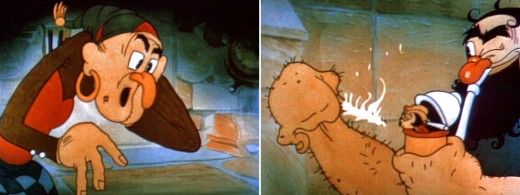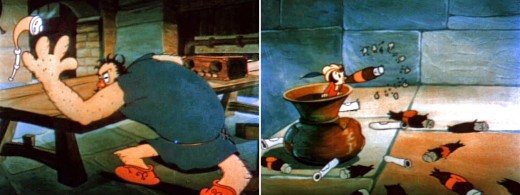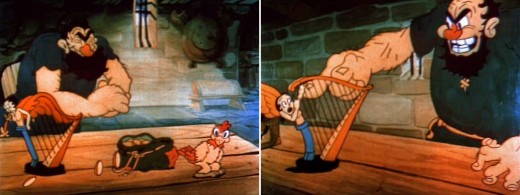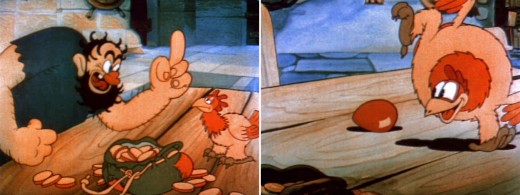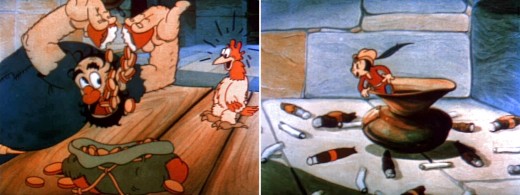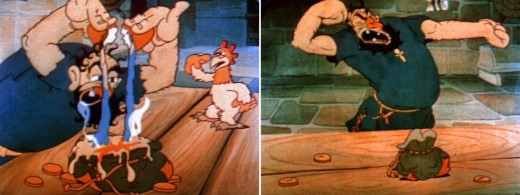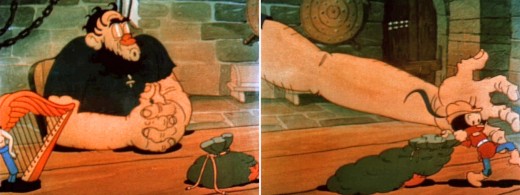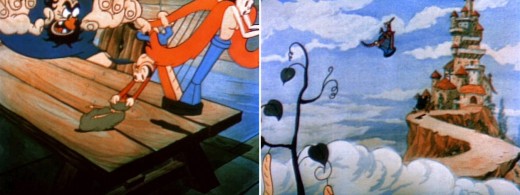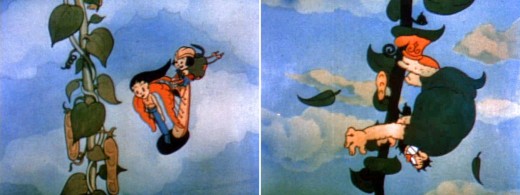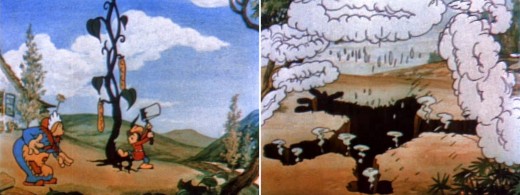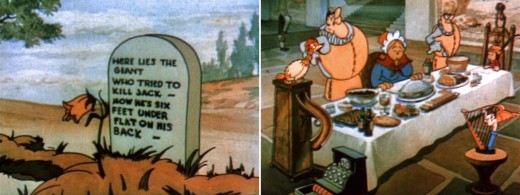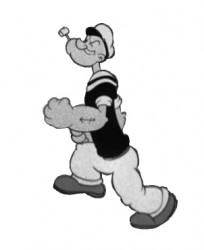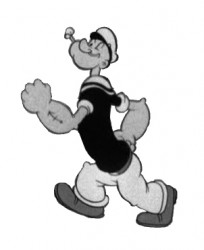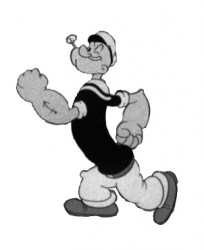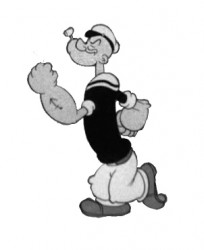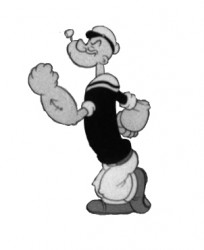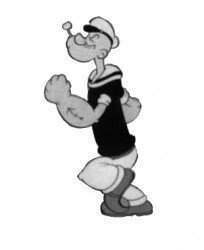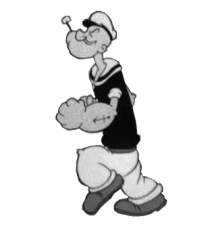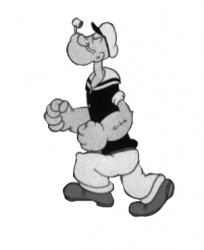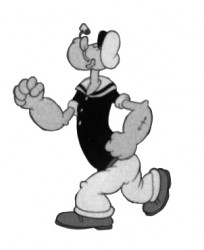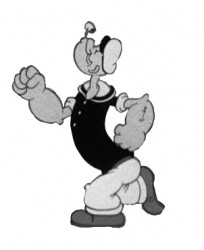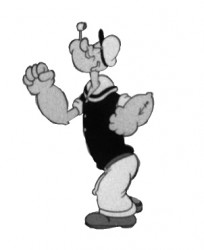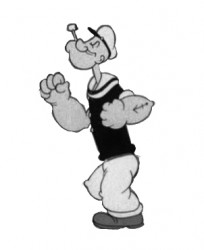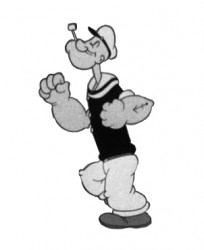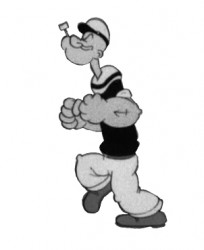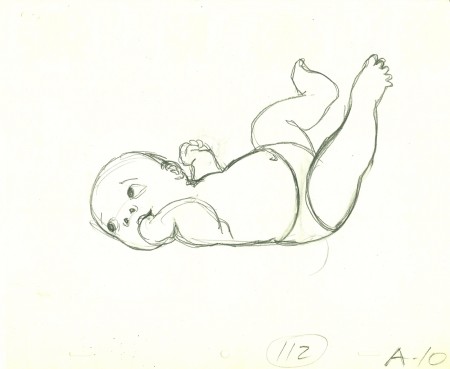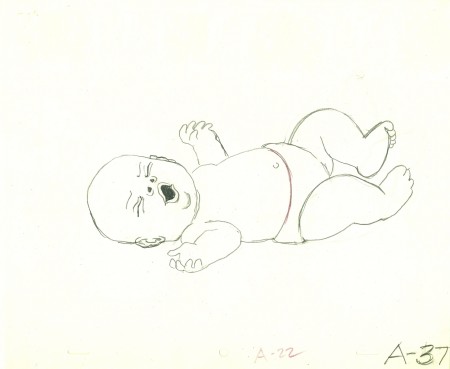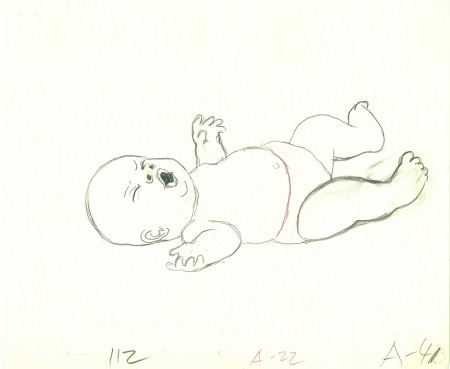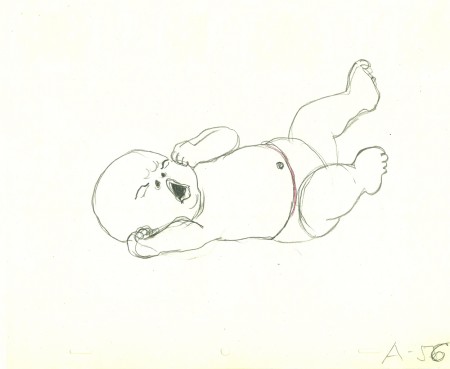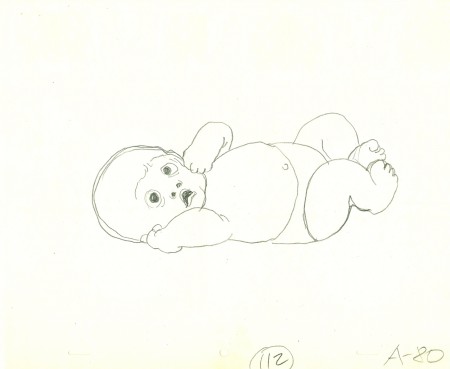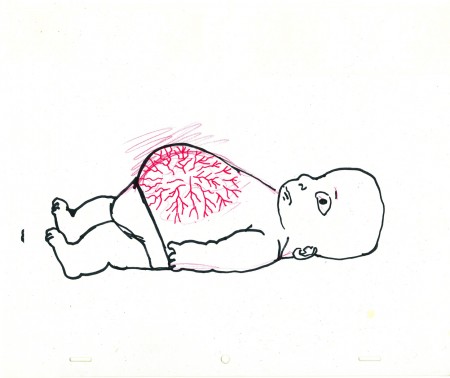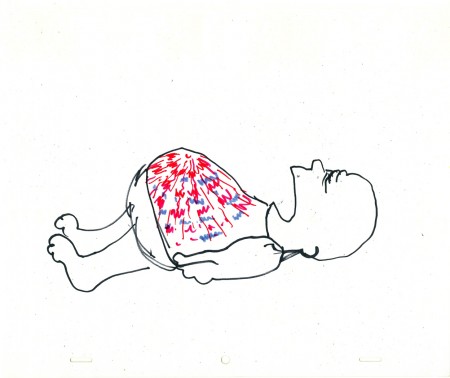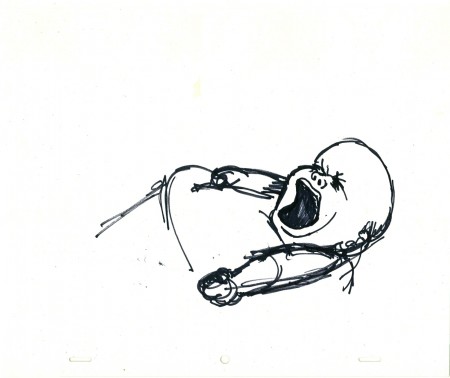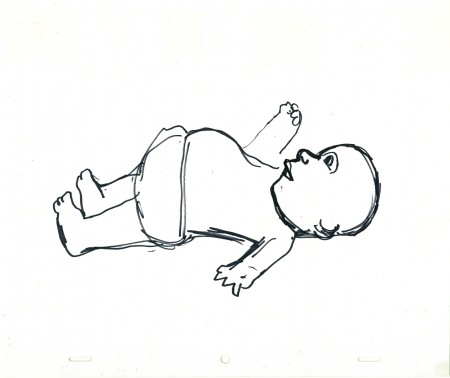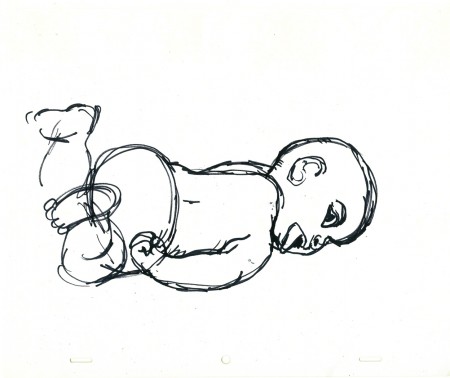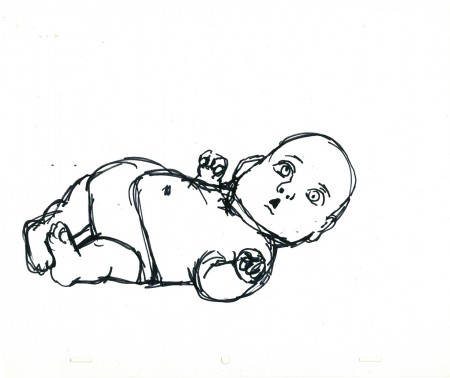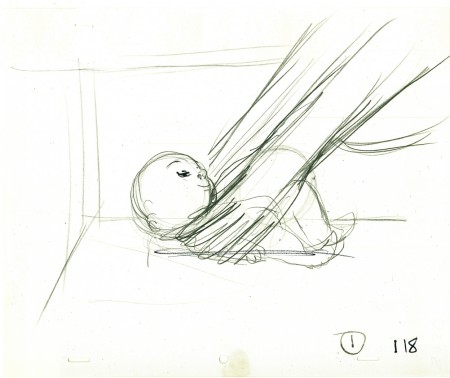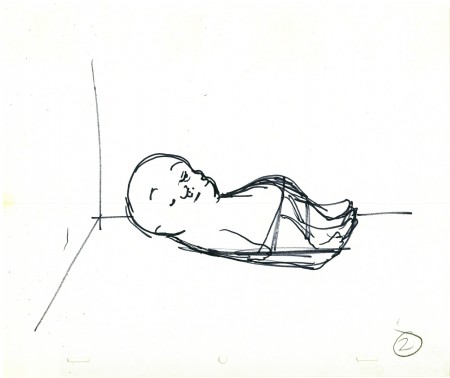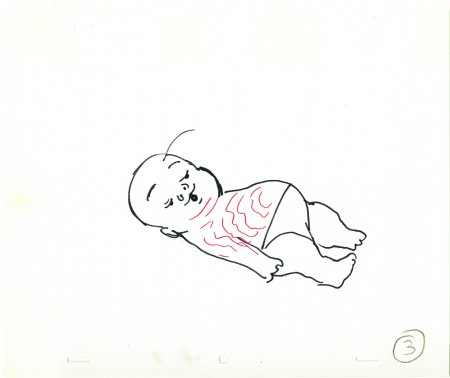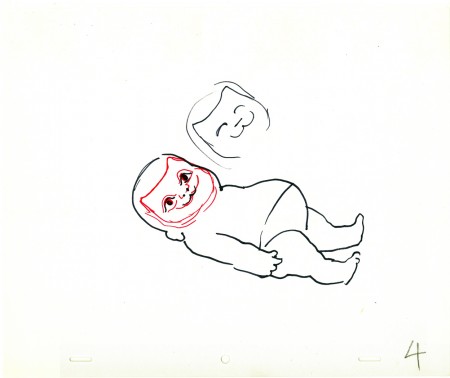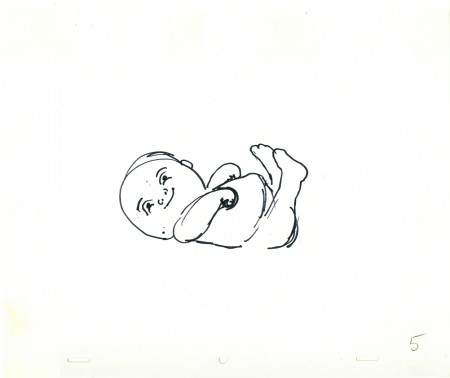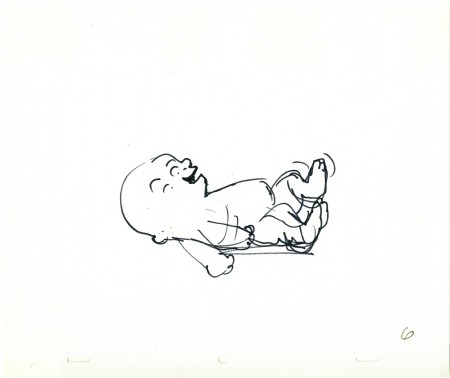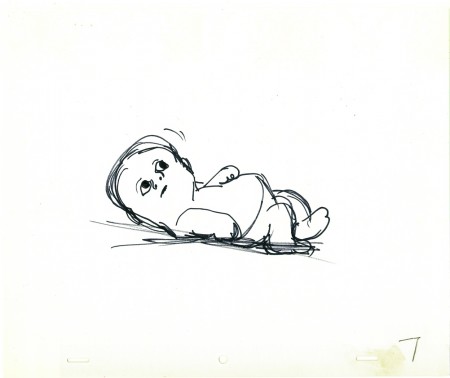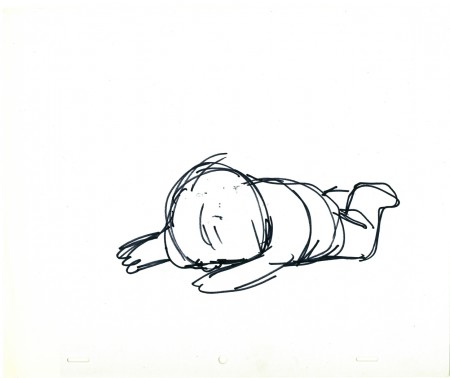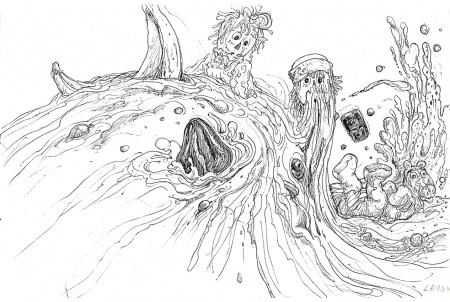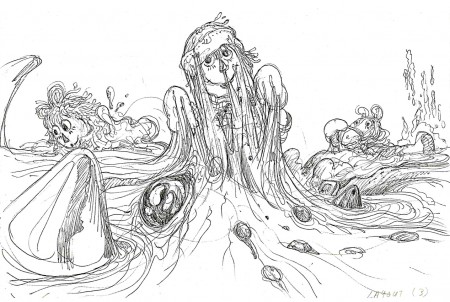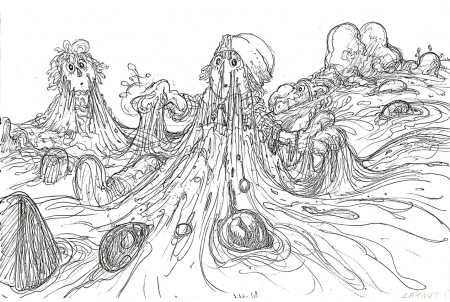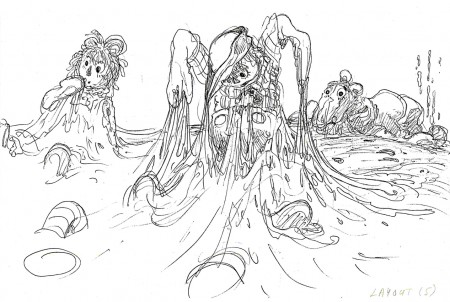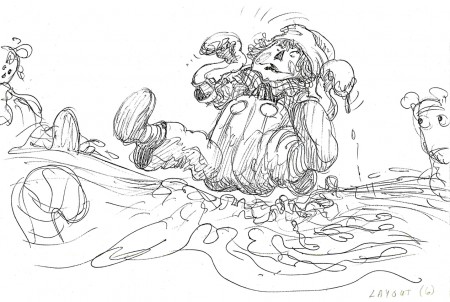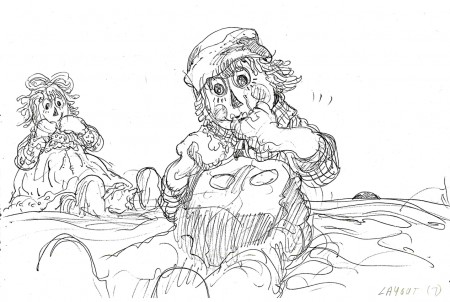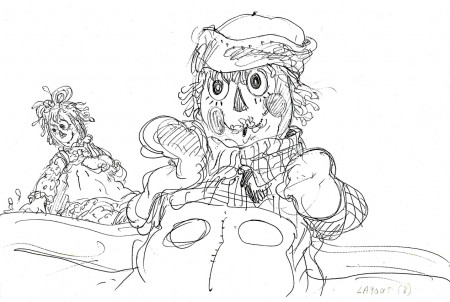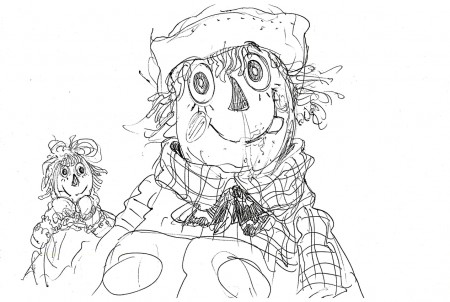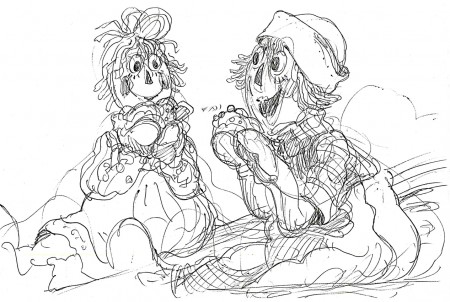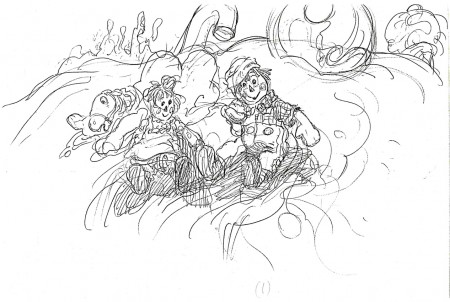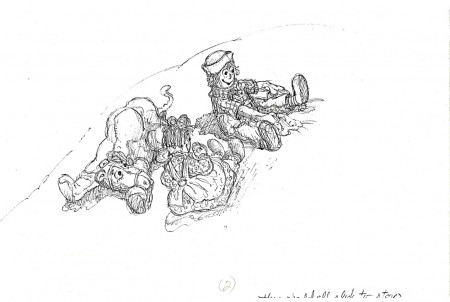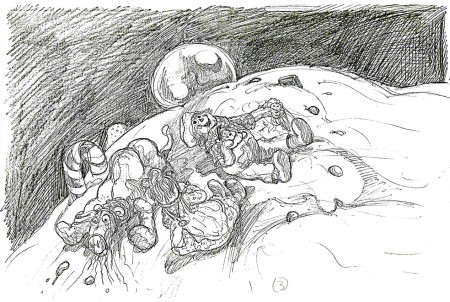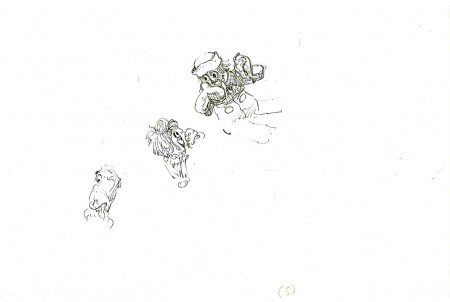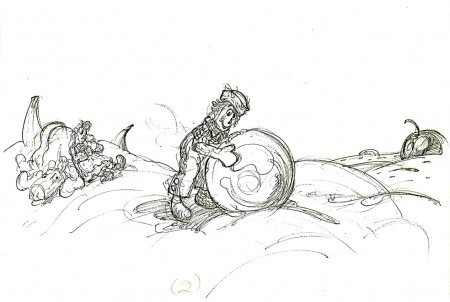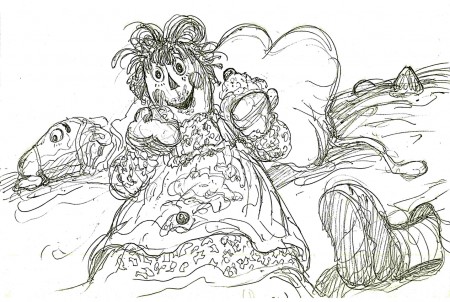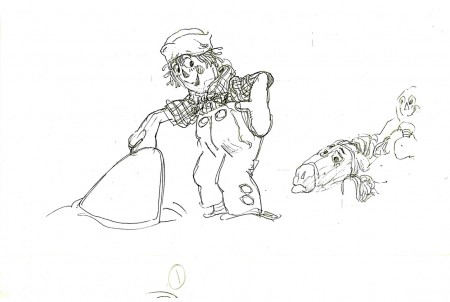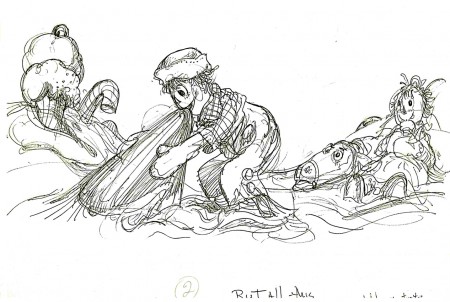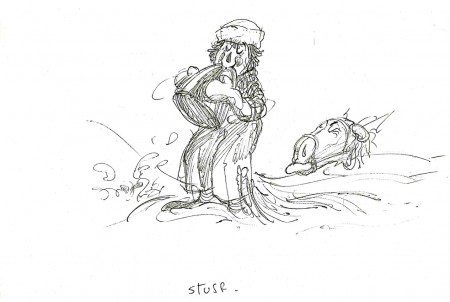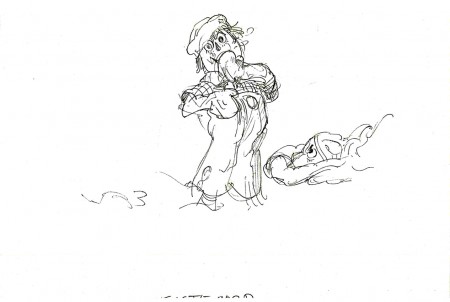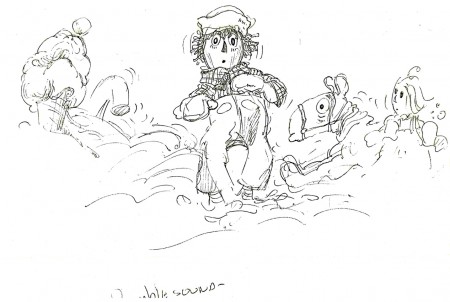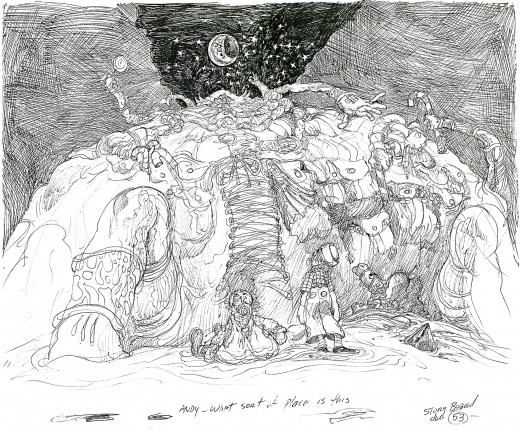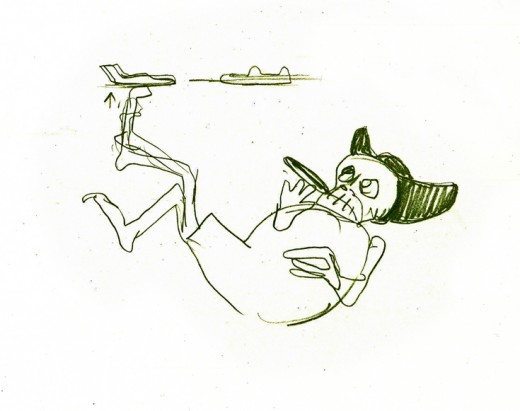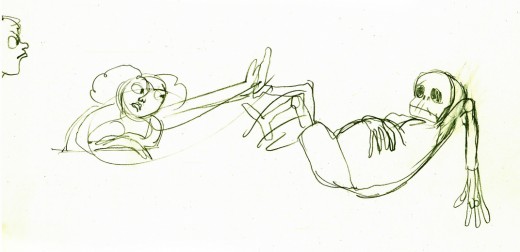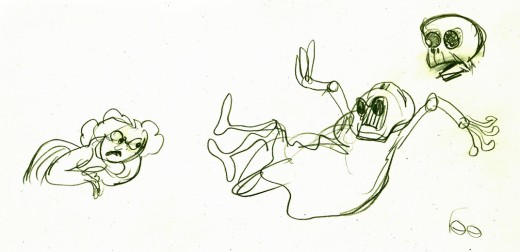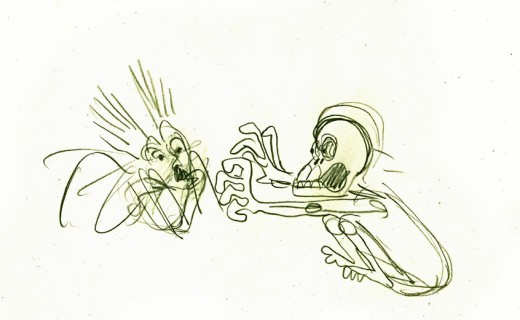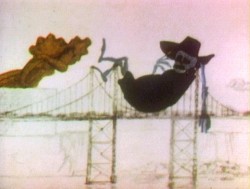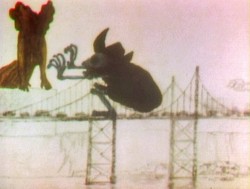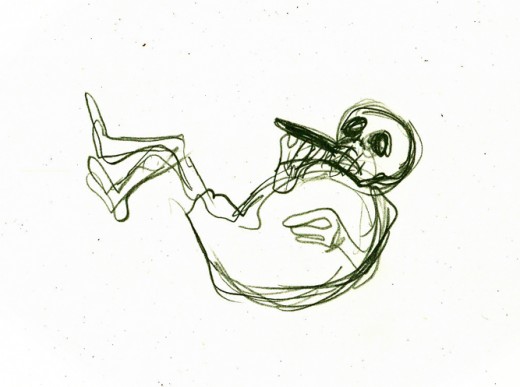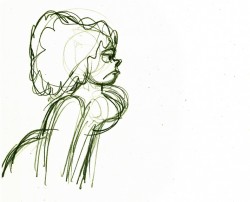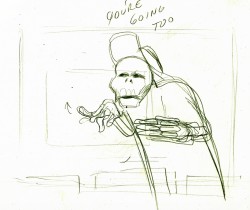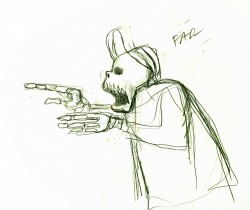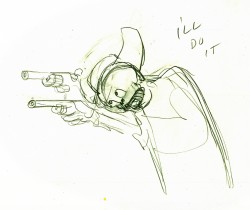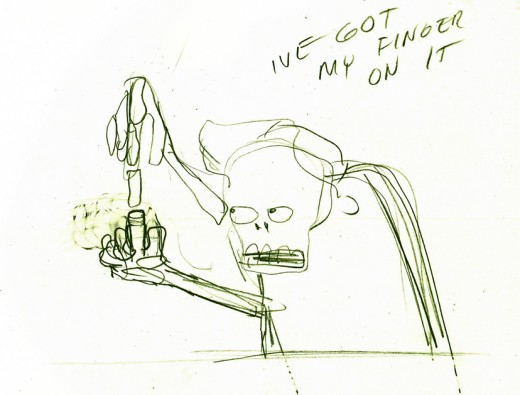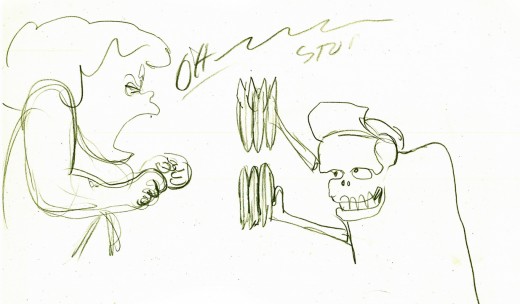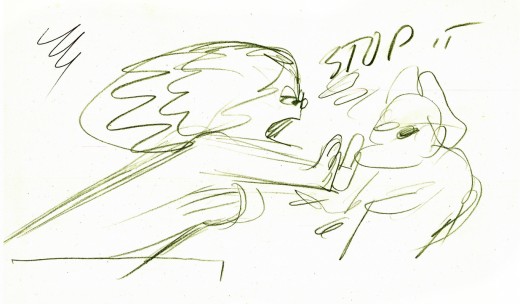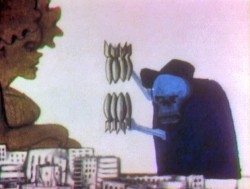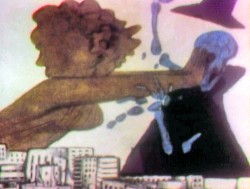Category ArchiveAnimation
Animation &Books &Puppet Animation 28 Jan 2009 08:52 am
Jason & The Argonauts
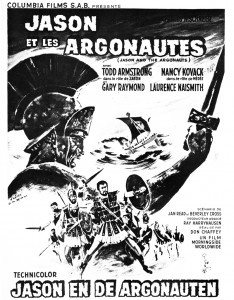
- Currently playing at the New Victory Theatre on 42nd Street (until Feb. 1) is a theatrical presentation of Jason and the Argonauts. Given the quality of the shows that play at the New Vic, I can pretty much guarantee that this is a first rate show.
I also have no doubt that the creators have seen the Ray Harryhausen film, Jason and the Argonauts, and must have been under its spell (however subliminally) in creating the show. It would be hard to believe otherwise given the reputation of the film. The skeleton fight, alone, makes the film famous.
This gives me a good excuse to attend to Mr. Harryhausen’s film and post the chapter from his 1972 book, Film Fantasy Scrapbook, about that film. The book is written in the first person singular and collects B&W images like a scrapbook.
Here it is:
Of the 13 fantasy features I have been connected with I think Jason and the Argonauts pleases me the most. It had certain faults, but they are not worth detailing.
Its subject matter formed a natural storyline for the Dynamation medium and like The Seventh Voyage of Sinbad strayed far from the conventional path of the “dinosaur exploitation film” with which this medium seemed to be identified.
Taking about two years to make, it unfortunately came out on the American market near the end of a cycle of Italian-made dubbed epics based loosely on the Greek-Roman legends, which seldom visualized mythology from the purely fantasy point of view. But the exhibitors and the public seem to form a premature judgment based on the title and on the vogue. Again, like Sinbad, the subject brewed in the back of my rnind for years before it reached the light of day through producer Charles Schneer. It turned out to be one of our most expensive productions to date and probably the most lavish. In Great Britain it was among the top ten big money makers of the year.
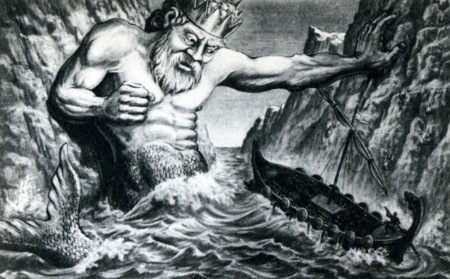
A preproduction drawing (above) compares favorably with a film still (below.)
The drawing is quite a bit more dynamic. (After all, it is Dynamation!)
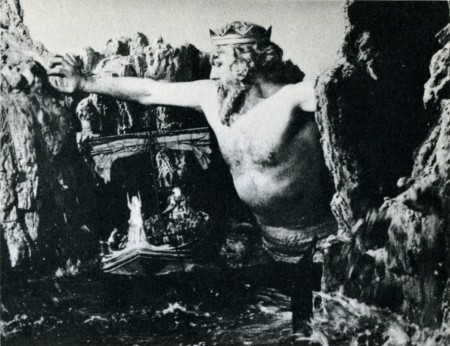
(Click any image to enlarge a bit.)
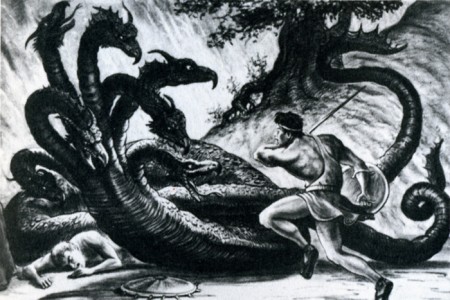
Likewise, a drawing of the hydra (above) film still (below.)
Some of the difference in basic composition between the pre-production sketches I made for Jason and the counterparts frames of the production is the direct result of compromising with available locations.
For example, the ancient temples in Paestum, southern Italy, finally served as the background for the “Harpy” sequence. Originally we were going to build the set when the production was scheduled for Yugoslavia. Wherever possible we try to use an actual location to add to the visual realism. To my mind, most overly designed sets one sees in some fantasy subjects can detract from, rather than add to the final presentation.
Again, it depends on the period in which it is made as well as on the basic subject matter. Korda’s The Thief of Bagdad was the most tastefully produced and designed production of any film of this nature but unfortunately the budget that was required would be prohibitive with today’s costs.
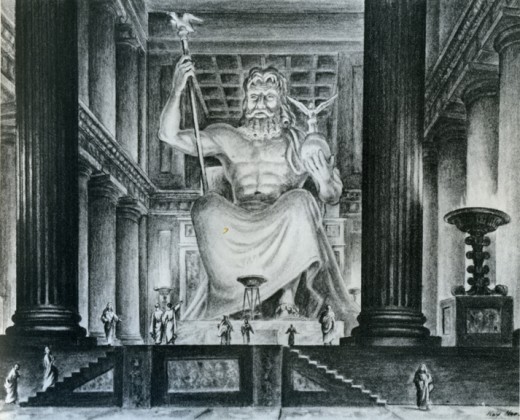
The Skeleton Sequence was the most talked-ahout part of Jason. Technically, it was unprecedented in the sphere of fantasy filming. When one pauses to think that there were seven skeletons fighting three men, with each skeleton having five appendages to move each frame of film, and keeping them all in synchronization with the three actors’ movements, one can readily see why it took four and a half months to record the sequence for the screen.
My one regret is that this section of the picture did not take place at night.
Its effect would have been doubled.
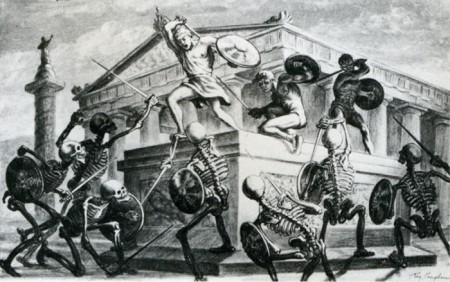
Certain other time-consuming technical “hocus-pocus” adjustments had to be done during shooting to create the illusion of the animated figures in actual contact with the live actors. Bernard Herrmann’s original and suitably fantastic music score wrapped the scenes in an aura of almost nightmarish imagination.
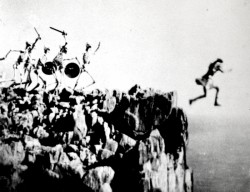
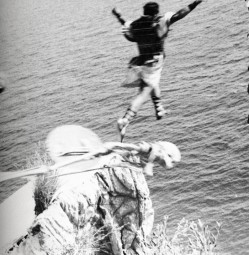
In the story, Jason’s only way of escaping the wild battling sword wielding “children of Hydra’s teeth” is to leap from a cliff into the sea. (Above left) A stuntman, portraying Jason for this shot, leaps from a 90-foot-high platform into the sea closely followed by seven plaster skeletons. It was a dangerous dive and required careful planning and great skill. It becomes an interesting speculation when dealing with skeletons in a film script. How many ways are there of killing off death?
(Above right) Another angle with the real Jason jumping off a wooden platform into a mattress a few feet below. The skeletons and the rocky cliff were put in afterwards while the mattress was blotted out by an overlay of sea.
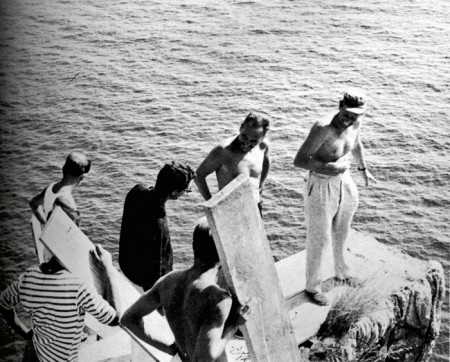
Director Don Chaffey and Ray Harryhausen discuss the leap with Italian stunt director Fernando Poggi.
When transferring published material to the screen it is almost always necessary to take certain liberties in the work in order to present it in the most effective visual terms. Talos, the man of bronze, did exist in Jason legend, although not in the gigantic proportions that we portrayed him in the film. My pattern of thing in designing him on a very large scale stemmed from research on the Colossus of Rhodes.
The actior: his blocking the only entrance to the harbor stimulated many exciting possibilities. Then too, the idea of a gigantic metal statue coming to life has haunted me for years, but without story or situation to bring it to life. It was somewhat ironic when most of my career was spent in trying to perfect smooth and life-like action and in the Talos sequence, the longest animated sequence in the picture, it was necessary to make his movements deliberately stiff and mechanical.
Most of Jason and the Argonauts was shot in and around the little seaside village of Palinuro, just south Naples. The unusual rock formations, the wonderful white sandy beaches, and the natural harbor were within a few miles of each other, making the complete operation convenient and economical. Paestum, w its fine Greek temples, was just a short distance north. All interiors and special sets were photographed in a sm studio in Rome.
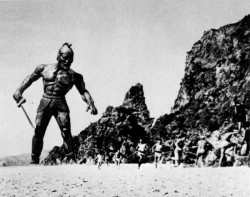
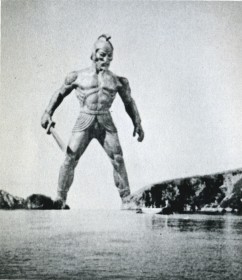 (Above left) Talos, the statue of bronze, pursues Jason’s men.
(Above left) Talos, the statue of bronze, pursues Jason’s men.
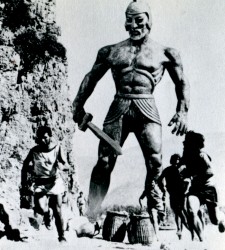
(Above right) Talos blocks the Argo
from the only exit of the bay.
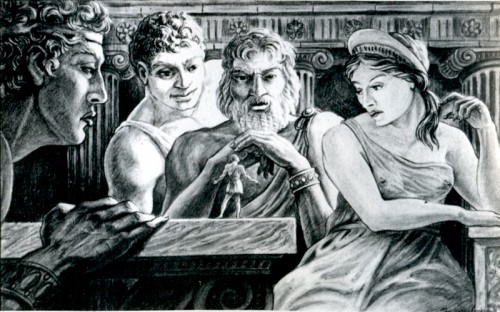
Pre-production drawing of Jason speaking to the Gods of Greece.
For the second unit operation a special platform had to be fitted to the Argo in order to achieve certain camera angles. Although it looks precarious it was far more convenient than using another boat for the shots.
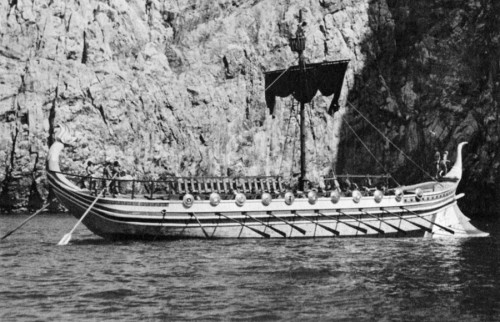
The Argo had to be, above all, practical in the sense that it must be seaworthy as well as impressive. It was specially constructed for the film over the existing framework of a fishing barge. There were twin engines for speed in maneuvering, which also made the ship easily manipulated into proper sunlight for each new set-up.
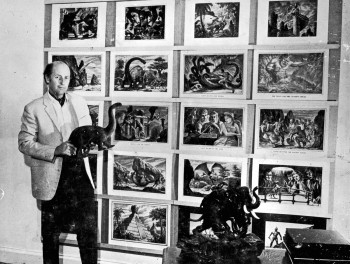
Harryhausen off the book’s back cover
to give an idea of scale of drawing sizes.
Animation &Disney &Frame Grabs 23 Jan 2009 09:14 am
Sw in St – Squirrels 2
- I continue here with the squirrel sequence from Disney’s Sword In The Stone. My doing thi s breakdown is precipitated bt Hans Perk‘s posting of the film’s drafts. I’ve loved the sequence since I first saw it in 1963; breaking it down forces me into a proper study of it.
However, I didn’t realize how long it was, and the break down will have to be broken up into a couple more posts.
Here, then, is where Frank Thomas takes over.
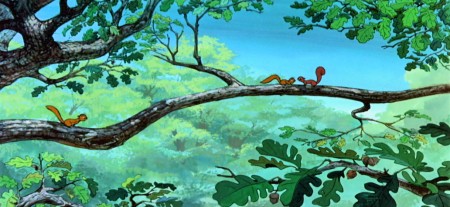
Seq. 006 sc. 24: Animator: Frank Thomas
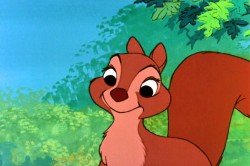
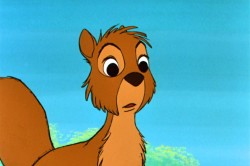
Seq. 006 sc. 25: Animator: Frank Thomas | Seq. 006 sc. 26: Animator: Frank Thomas
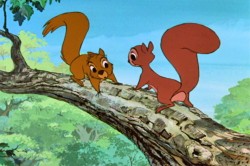
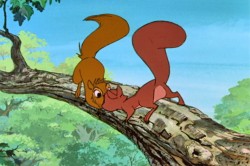
Seq. 006 sc. 27: Animator: Frank Thomas
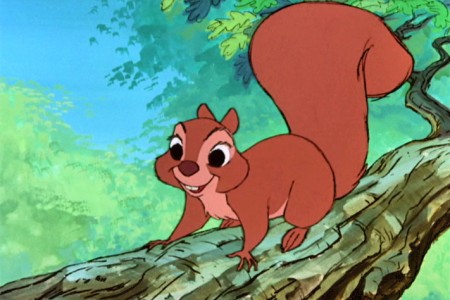
Seq. 006 sc. 28: Animator: Frank Thomas
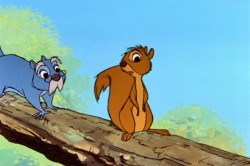
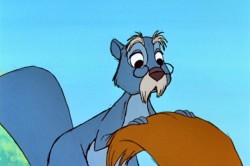
Seq. 006 sc. 29: Animator: Frank Thomas | Seq. 006 sc. 30: Animator: Frank Thomas
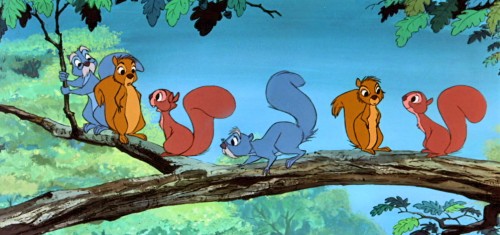
Seq. 006 sc. 31: Animator: Frank Thomas
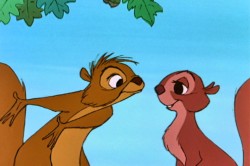
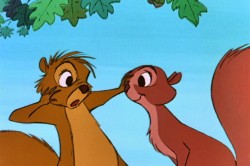
Seq. 006 sc. 32: Animator: Frank Thomas
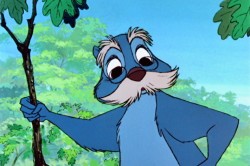
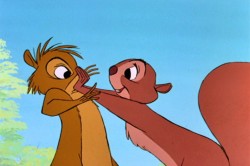
Seq. 006 sc. 33: Animator: Frank Thomas | Seq. 006 sc. 34: Animator: Frank Thomas
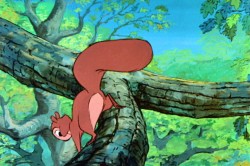
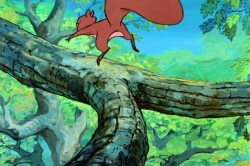
Seq. 006 sc. 34.1: Animator: Frank Thomas
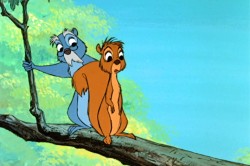
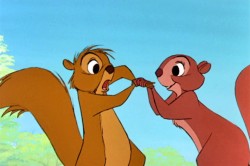
Seq. 006 sc. 34.2: Animator: Frank Thomas | Seq. 006 sc. 34.3: Animator: Frank Thomas
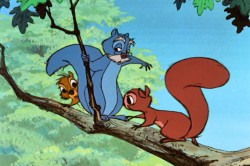
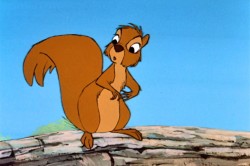
Seq. 006 sc. 35: Animator: Frank Thomas | Seq. 006 sc. 36: Animator: Frank Thomas
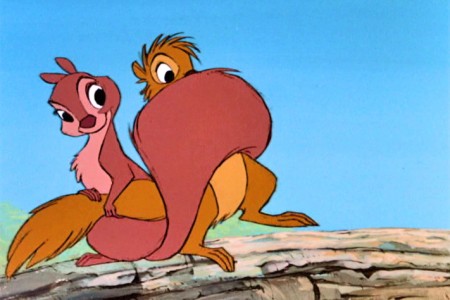
Seq. 006 sc. 37: Animator: Frank Thomas
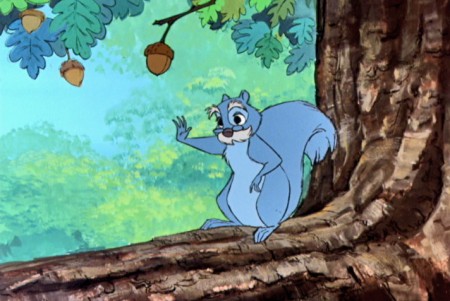
Seq. 006 sc. 38: Animator: Frank Thomas
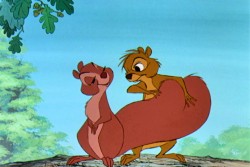
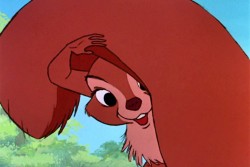
Seq. 006 sc. 39: Animator: Frank Thomas | Seq. 006 sc. 40: Animator: Frank Thomas
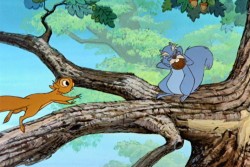
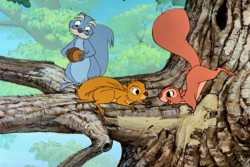
Seq. 006 sc. 41: Animator: Frank Thomas
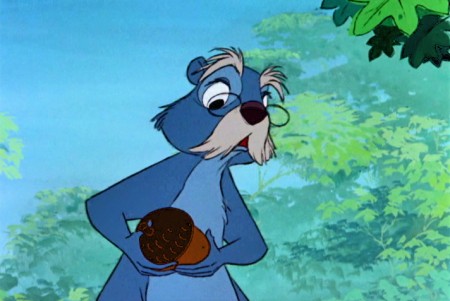
Seq. 006 sc. 42: Animator: Frank Thomas
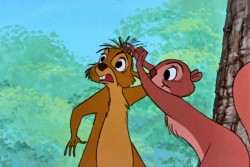
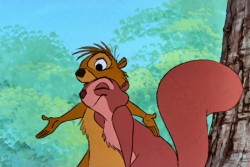
Seq. 006 sc. 43: Animator: Frank Thomas
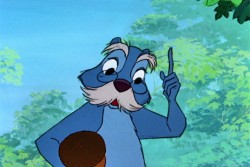
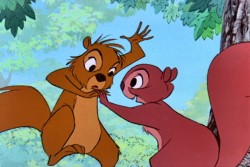
Seq. 006 sc. 44: Animator: Frank Thomas | Seq. 006 sc. 45: Animator: Frank Thomas
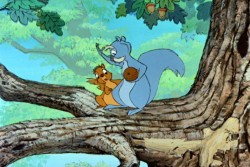
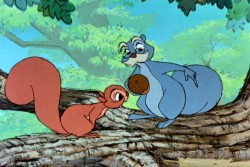
Seq. 006 sc. 46: Animator: Frank Thomas
To be continued.
Animation &Disney 22 Jan 2009 08:52 am
Sw in St – Squirrels
Oscar Nominations
The following films have been nominated for Best Animated Short Subject
La Maison de Petits Cubes by Kunio Kato
Lavatory – Lovestory by Konstantin Bronzit
Oktapodi by Emud Mokhberi, Thierry Marchand
Presto by Pixar/Doug Sweetland
This Way Up by Alan Smith, Adam Foulkes
The Best Animated Feature nominations are:
Bolt, Kung Fu Panda, Wall-E
The nominations for Short Subject (both Live and Animated) are an interesting choice. I much prefer Glago’s Guest to Presto (my idea of a really bad film), but my favorite (House of Small Cubes) is nominated. I won’t complain. I expected Skhizen to be among the choices, but it’s probably too intelligent.
On to a more interesting, though not topical subject:
-When you speak to most animators they’ll probably tell you that the key sequence in The Sword In The Stone is the squirrel sequence. Hans Perk has been posting the drafts to this film, and since he’s now putting up the squirrel sequence, I thought it worth contributing a “mosaic” (not as good as Mark Mayerson would have done) for the sequence.
It’s longish, so it’ll take a few days to put it together. Here’s the first part:
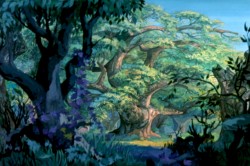
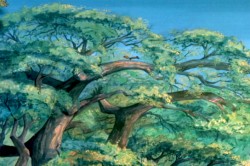
Seq. 006 sc. 1: Animator: Hal King

Seq. 006 sc. 2: Animator: Hal King
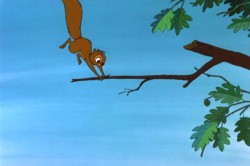
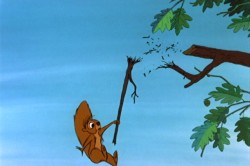
Seq. 006 sc. 3: Animator: Hal King
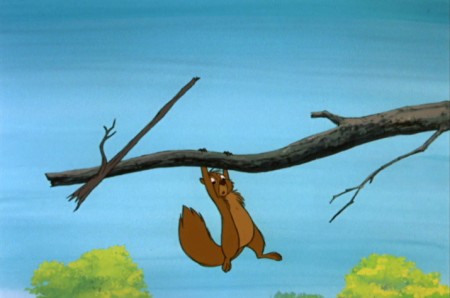
Seq. 006 sc. 3.1: Animator: Hal King
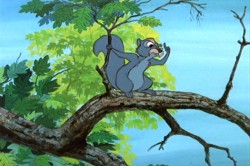
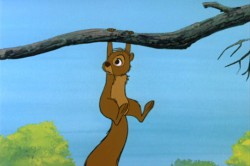
Seq. 006 sc. 4: Animator: Hal King | Seq. 006 sc. 5: Animator: Hal King
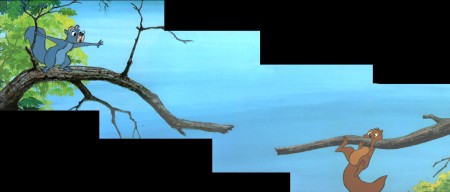
Seq. 006 sc. 6: Animator: Hal King
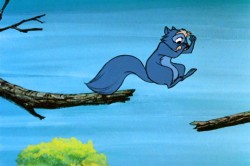
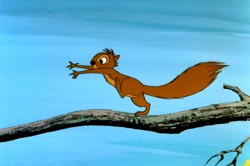
Seq. 006 sc. 7: Animator: Hal King
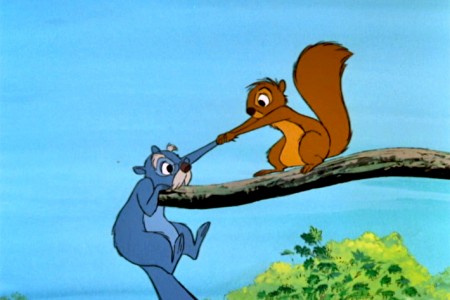
Seq. 006 sc. 9: Animator: Hal King
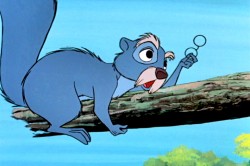
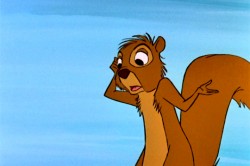
Seq. 006 sc. 10: Animator: Hal King | Seq. 006 sc. 11: Animator: Hal King
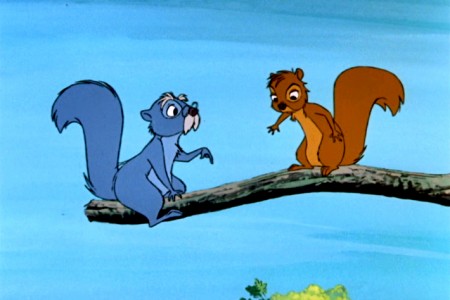
Seq. 006 sc. 11.1: Animator: Hal King
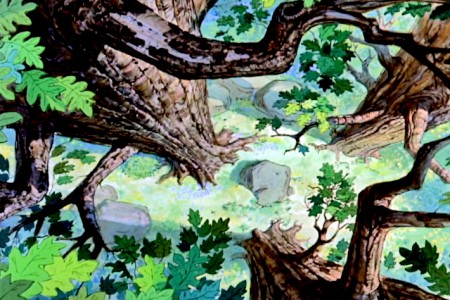
Seq. 006 sc. 12: Animator: Hal King
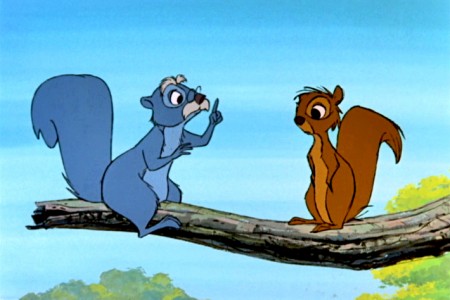
Seq. 006 sc. 13: Animator: Hal King

Seq. 006 sc. 22: Animator: Hal King
More tomorrow.
Animation &Articles on Animation 20 Jan 2009 08:50 am
Obama, Borge, Babbitt, Bunin
My favorite post on the subject comes from Tom Sito‘s blog –
as might have been expected.
_______________________________
- I recently received an email from Borge Ring, and thought I’d share its contents with you:
- Back in the sixties I pumped Lou Bunin at Annecy for knowledge about Art Babbitt – “My worlds best animator” at the time – whom I had never met”.
Bunin was friendly and praised Art’s animation for Bunin’s own puppet film about “Alice in Wonderland” but added:
“One thing about him surprised me”,
“What”?
“That he was”such a poor draftsman”
Art animated his scenes on paper for the puppet animator to follow.
Years later I saw a scene from Bunin’s Alice of the rabbit walking up to a door and knocking.
It reeks of Babbitt.
Given this comment, I think it’d be appropriate to post these pages from Shamus Culhane’s book, Animation, From Script to Screen.”
The book includes an enormous wealth of other animation referential material and is a must-own for animation fans. I’d posted two of these two years ago.
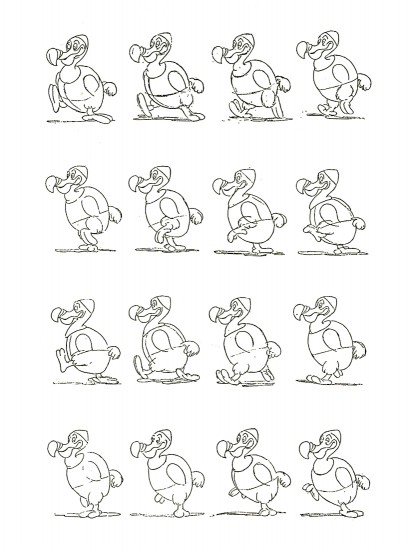
(Click any image to enlarge.)
It’s remarkable that Babbitt was animating for Lou Buinin’s Alice at the very same time his former employer, Disney, was doing their version of the same book. Both films were released almost simultaneously.
Disney, at one point, took Bunin to court trying to suppress his Alice, but the judge sided with Bunin. The material was in public domain.
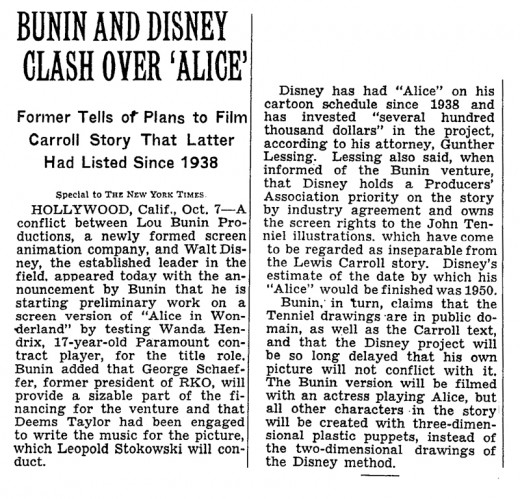
Here’s the review for Lou Bunin’s film:
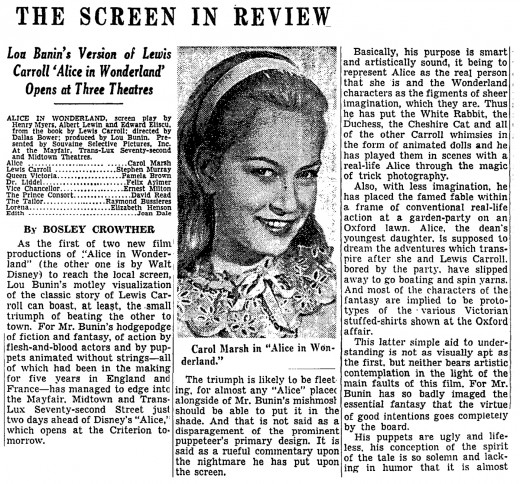
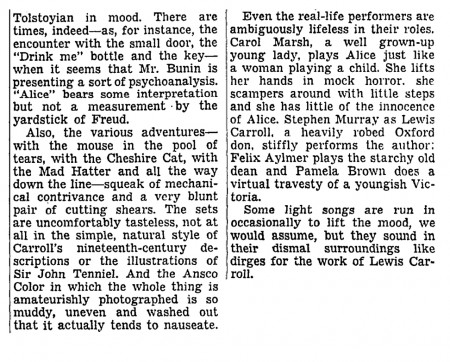
Animation &Frame Grabs 01 Jan 2009 09:09 am
Beanstalks
- For New Year’s Day, I’m going to go back to the beginning. My beginning – or at least the day I think I truly came to understand what animation involved and how much I really loved it.
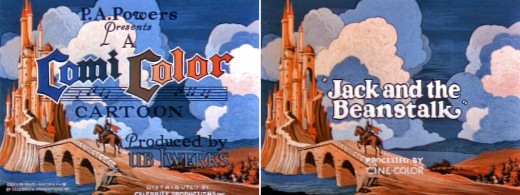
(Click on any image to enlarge.)
I was 12 and had saved my entire summer savings working as a delivery boy for a pharmacist not far from my home. All I made was tips, and the summer had brought me a full $30.
I wanted a projector to watch films. If I was going to make cartoons, I had to have a projector. (Who thought about having a camera to watch them!)
My mother sat down with me – we lived in the Inwood section of far upper Manhattan. She gave me a home-drawn map of the city and told me how I could get there by train. On my own, I took a subway trip to 42nd Street and headed for Peerless Cameras. This was a camera store near Grand Central which would later merge with Willoughby to become Peerless-Willoughby.
They had used 8mm projectors (before the invention of super 8 ), and I intended to go home with one. I did – $25.
Of course, I needed something to project, and Peerless had a VERY LARGE section of entertainment films – 8mm & 16mm. Castle Films distributed many of the Ub Iwerks shorts (most were B&W prints.) They were cut down a bit from the full film, and title cards were edited into them. Obviously, the 8mm projectors and films were silent back then (we’re talking about 1959.)
I’d known the name of Ub Iwerks since I was 8. He was as close to an animation hero as I could muster at that young age. I’d read all about him and knew of the period when he’d had his own studio. There, in Peerless, was Jack and the Beanstalk, and this was the first film I bought.
I felt absolute delight watching that film an endless number of times. The film was, as I said, in B&W, but this actually enhanced some problems old Ub had faced when he started out.
The color paints, for example, weren’t so smooth to lay down. The hand of the bean-seller streaked like crazy and was more obvious in the B&W version. The same was true of the giant’s hand later in the film. Obviously, any time they mixed white into their colors, they couldn’t get it consistent. Terrytoons had this problem well into the 40′s.
It was fun noticing the many elements that made up the film. There were special effects in the film. I’d known that Iwerks was involved in “Special Processes” at the studio (whatever that was – it had to be effects), so you could look at what he did in his own studio. The dark house in the rain storm, illuminated by the lightning was impressive.
Also, the characters were so wacky, you couldn’t help but be entertained by them. The drawing shifted all over the place, but despite the fact that I noticed this – at the age of 12 – I also knew I didn’t mind. You always knew who the characters were even if they went wildly off model.
Every once in a while, there was a hint of a “multiplane-like” effect. When Jack stepped off the beanstalk and onto the clouds, the cel levels move into a position so that the illusion of depth is attempted. It’s handled nicely, I have to say.
Of course, it was a bit of a surprise to find that I couldn’t stop the projector one frame at a time. I wanted to do more than watch the film over and over and over and over and over (which I did.) Eventually, I got tired of this and started tinkering with the machine. I had to be cautious so as not to jar the bulb which could easily burn out and cost me another five bucks.
There was a framing device on the projector. Sometimes the frame line was in the picture and you had to turn this knob to properly frame the picture. By turning this an ungodly number of times, you could actually advance the frames, but you couldn’t see more than about four frames at a time.
That wasn’t quite good enough, so I ultimately started taking the projector apart. I was able to rework the framing mechanism so it could keep going. I was able to watch the film one frame at a time and truly study the animation.
I can’t tell you how many hours I pored over this film.
There was a scene where the giant watches money falling out of the hen’s golden eggs. His one eye follows the coins down (and later follows the rotten egg leaking into the money bag.)
I remembered this scene well when studying some drawings Tytla had done of Stromboli counting his coins. His eyes are similarly loose as they follow the coins to the table, and I wondered if he had known about this giant animation.
Back then, I wasn’t aware that Iwerks hadn’t drawn the entire film by himself. I eventually came to learn that Grim Natwick pretty much ran the studio for quite some time and was replaced, after he’d left for Disney, by Shamus Culhane.
Years later, when I first met up with Grim Natwick, I told him that this film was the very first animated film I’d studied and studied in my goal of becoming an animator. He didn’t offer much of a reaction.
It was a real treat taking this film apart. I started out knowing nothing and soon learned that animation had many decisions and choices behind it. Even today I get a twinge of excitement when I first look at this short – I’m sure it’s as much nostalgia as anything.
In short, it’s all so much easier today. Get a dvd through the mail, look at it on YouTube. Get an animation program like Flash and wallah you’re an animator. There’s no effort. Maybe there was an advantage to having to make an effort.
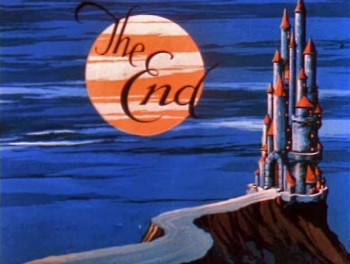
Here’s the link to the YouTube version of the Jack & the Beanstalk.
And here’s the link to vol 1 of The Cartoons That Time Forgot.
Happy New Year
Animation &Fleischer &Frame Grabs 26 Dec 2008 09:23 am
Popeye’s Waldman Walk
- One of the oddest animation walks appears in Popeye meets Rip Van Winkle. It’s the only Popeye cartoon that Myron Waldman animated (he actually directed the animation). I’m not sure if he animated this walk, which starts the film, but I’d say it was a pretty good bet.
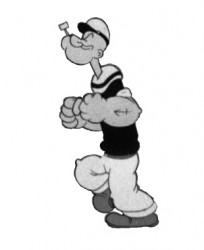 1__
1__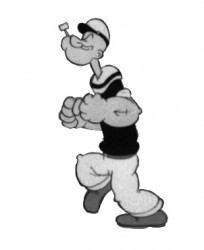 2
2(Click any image to enlarge.) Click the left side of the black bar above.
Animation &Animation Artifacts &Hubley &Tissa David 17 Dec 2008 09:10 am
Tissa Babies
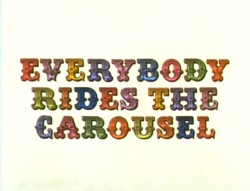 - Yesterday I gave you a look at John Hubley LOs for some of the babies in the key scene, 112, from the Hubley feature, Everybody Rides the Carousel.
- Yesterday I gave you a look at John Hubley LOs for some of the babies in the key scene, 112, from the Hubley feature, Everybody Rides the Carousel.
Tissa David did the lion’s share of this sequence which totaled about 10 mins of screen time. Barrie Nelson did some of the later scenes. (Tissa also did a second sequence occurring later in the film – ride #6. Barrie also completed that one.)
Tissa didn’t get any footage to study or even still photos (though she probably did her own research at the library.) She said she based her baby on her sister’s child.
These are her drawings from the same scene – 112.
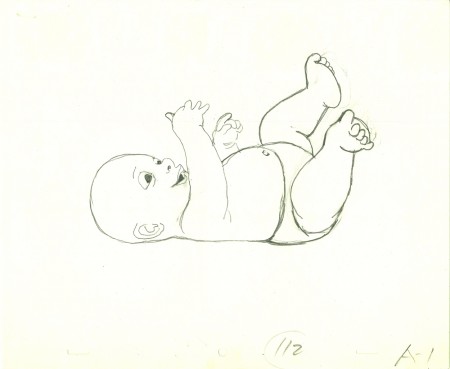
(Click any image to enlarge.)
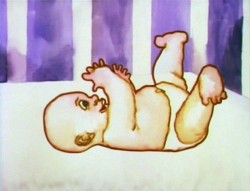

These frame grabs give an indication of how it was colored.
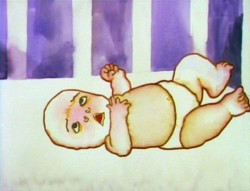
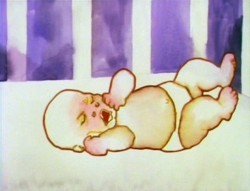
The style was to use a watercolor marker to ink the baby.
Then water was applied to the marker to loosen the color into the body.
This coloring style was used throughout the film.
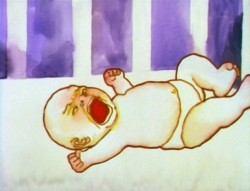
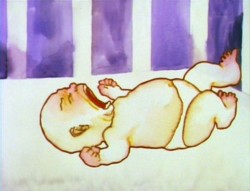
The image of the baby above right was a big deal for John Hubley.
Tissa didn’t want to do a cut mouth because it read as too two-dimensional
for her. She fought John several tries, but ended up
giving in and holding that head for a couple of frames.
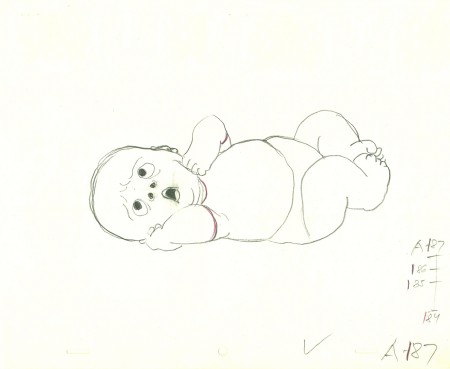
Lots of small cycles went on in this baby shot.
Tissa masterfully worked in and out of and back into these cycles
throughout the entire sequence. The baby was always in motion.
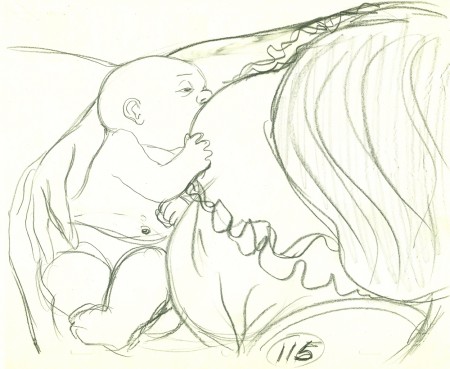
This last drawing is from Sc 115 where the mother
picks up the crying infant and nurses her.
I’ll offer more of these drawings next week.
Animation &Animation Artifacts &Hubley &Layout & Design 16 Dec 2008 09:00 am
Hubley Babies
 - John & Faith Hubley‘s feature film, Everybody Rides the Carousel was a great project to work on. The story was top notch, the art was flying left and right. (The entire production had a six month schedule and a budget of $450,000 when it was planned as three half-hour shows for CBS. Another month and $50,000 was added to extend it into a 90 min program.)
- John & Faith Hubley‘s feature film, Everybody Rides the Carousel was a great project to work on. The story was top notch, the art was flying left and right. (The entire production had a six month schedule and a budget of $450,000 when it was planned as three half-hour shows for CBS. Another month and $50,000 was added to extend it into a 90 min program.)
Great, talented people, as expected, worked on it.
Animators included: Tissa David, Barrie Nelson, Bill Littlejohn, Art Babbitt, Fred Burns, Adam Beckett, Lu Guarnier, Jack Schnerk, Don Patterson, Ruth Kissane, Phil Duncan and Earl James.
The excellent score was written by the rising classical/jazz composer, William Russo. (I was amazed at this in that I was addicted to his Three Pieces for Blues Band and Symphony Orchestra and hadn’t realized that the Hubleys knew his work.
The vocal talent included old reliables such as Lane Smith, Jack Gilford, Juanita moore, Dinah Manoff and Lou Jacobi and introduced new, young talent Meryl Streep and Jenny Lumet.
 For someone my age, it was a dream production. I coordinated the animation, assisted all of the animators who required help and animated some 85 scenes.
For someone my age, it was a dream production. I coordinated the animation, assisted all of the animators who required help and animated some 85 scenes.
The film was an adaptation of the writings of psychoanalyst Erik Erikson, specifically his book Childhood and Society (1950). Eight Stages of Development were adapted into eight horses on a carousel, each representing a different stage in human development.
Today I’d like to post some of John Hubley’s drawings of the baby in the opening sequence. These were all animated by Tissa David, and I’ll post her drawings of the same poses tomorrow. They’re very different.
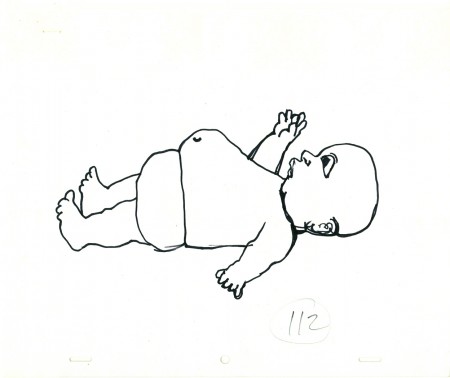
(Click any image to enlarge.)
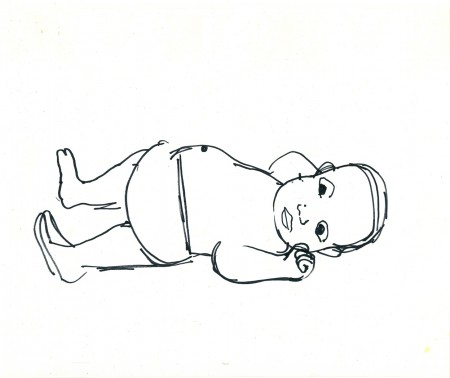
All of John’s drawings were done with a Sharpie pen,
which was his weapon of choice, most of the time.
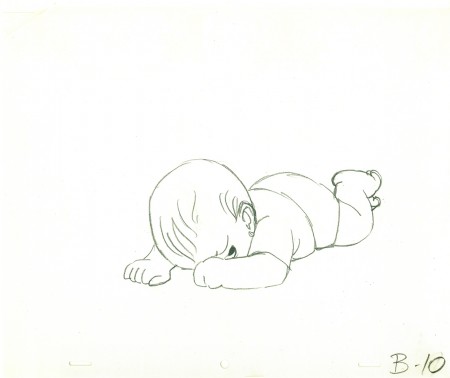
This last drawing (done in pencil) is Tissa David’s interpretation of
John Hubley’s last image. She did a bunch of these sketches and
worked with John in solidifing what the final look of the baby would be.
Tomorrow I’ll post Tissa’s drawings.
Animation &Layout & Design &Richard Williams &Story & Storyboards 11 Nov 2008 09:16 am
Corny Taffy
Corny Cole’s home was destroyed in a recent California fire. 90% of his artwork, saved from over his many years in animation was destroyed. This is a link to a PayPal site where you can donate some coin to help Corny and his wife who lost everything in the fire.
I have a feeling that many people don’t know of Corny’s incredible talent, so I’ve been trying to feature some of the material I have. It’s all stunning artwork, so it’s also a treat for me.
Here’s a sequence of layouts from Dick Williams’ Raggedy Ann featuring Ann, Andy and the Camel in the taffy pit. All drawings (and there are many hundreds more like this) were done by Corny.
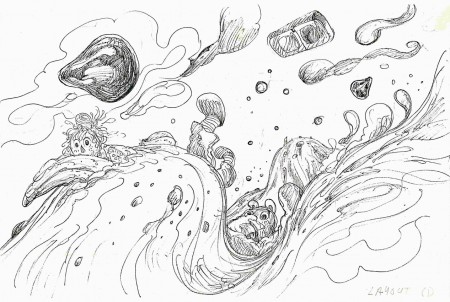 1
1(Click any image to enlarge.)
Animation &Animation Artifacts &Hubley &Models 31 Oct 2008 08:12 am
Halloween Eggs
- For Halloween, we’re all posting relevant material to the “holiday.” I have a lot of artwork from the Hubley short, EGGS, which was wholly animated by Tissa David.
One of the two characters starring in the short is a skeleton, symbolic of death and destruction. The other is a nymph, who represents fertility. The show is basically about the complications overpopulation has presented to the world.
I thought it appropriate for today to post some of the drawings and models for the death character. The images displayed are cropped from the full animation sheets; when you click these displayed it’ll enlarge to the full page. Here they are.
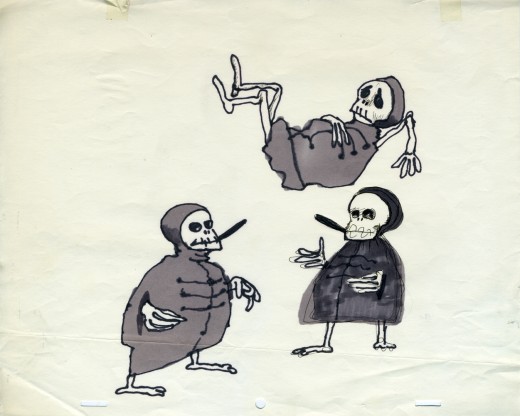
The first model of the character came close to the final.
This is a drawing by John Hubley.
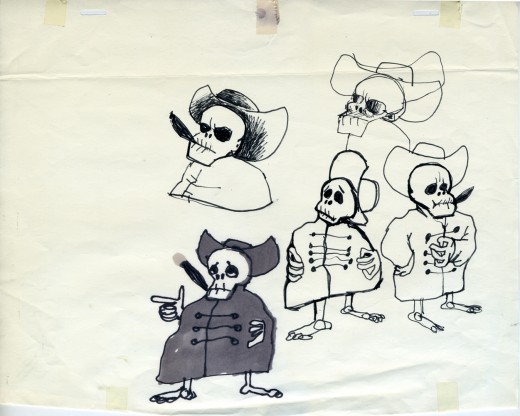
He soon solidified in this model by Hubley.
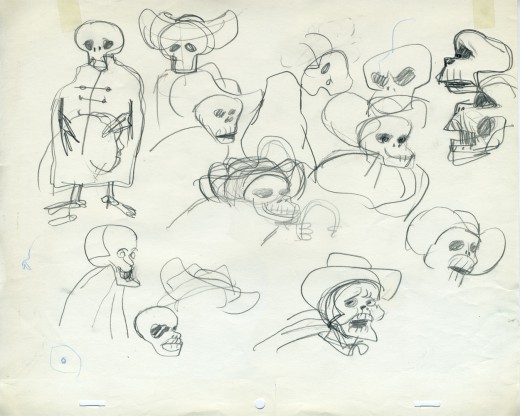
Tissa David finally worked out some of the problems for herself
and created this working model sheet.
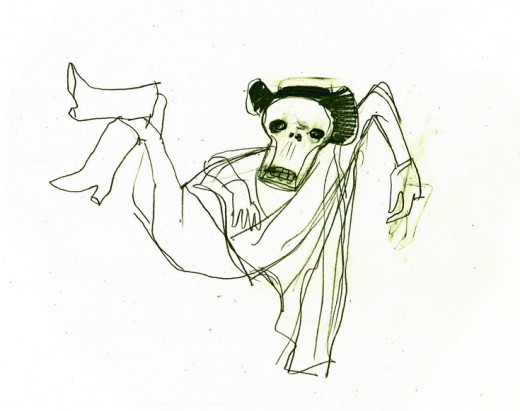
Here’s a beautiful working drawing by Tissa as
she started to pose out the scenes.
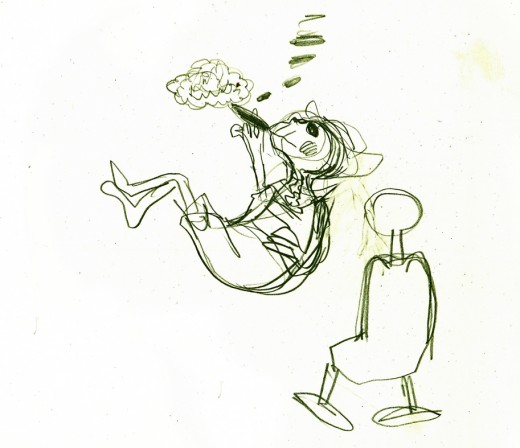
Tissa’s roughs are deceptively simple but convey so much. These drawings
are for her eyes only, usually, she’ll clean it up somewhat for animation.
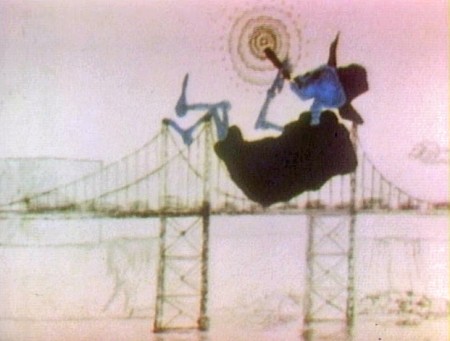
Unfortunately the dvd is a bit soft partially because of the nature of the
underlit final artwork. Perhaps someday there’ll be a better digital transfer.
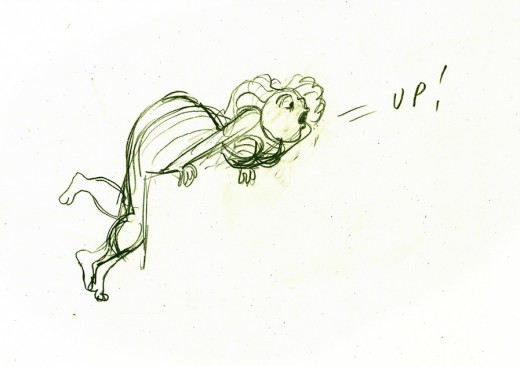
Fertility is oozing sexuality in every drawing. This is part of the
same scene as she converses with death about the human race.
Here’s a YouTube interview with John & Faith Hubley done in 1973. They discuss Eggs and Voyage to Next.
Here’s EGGS on YouTube in a contrasty but sharp copy.
